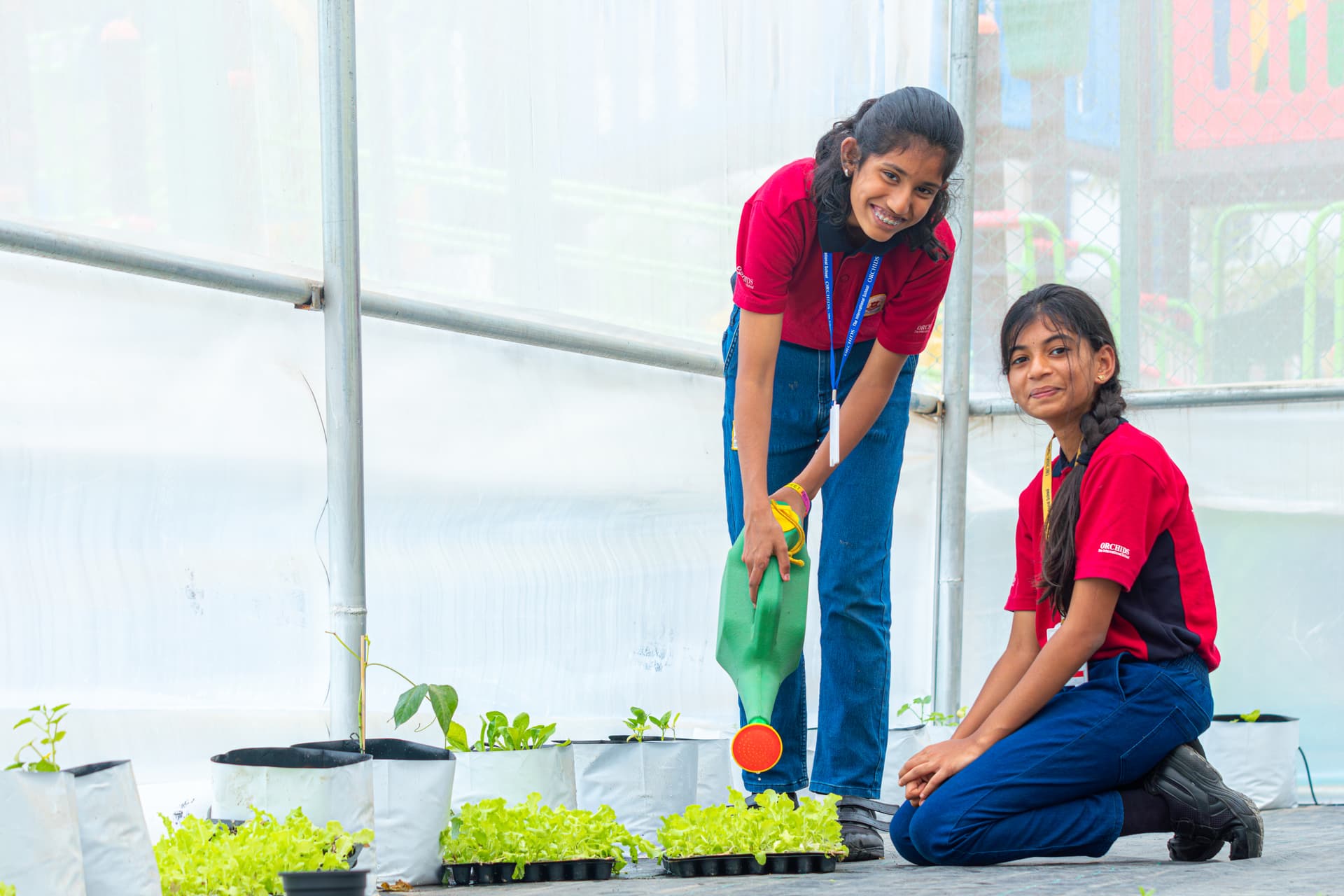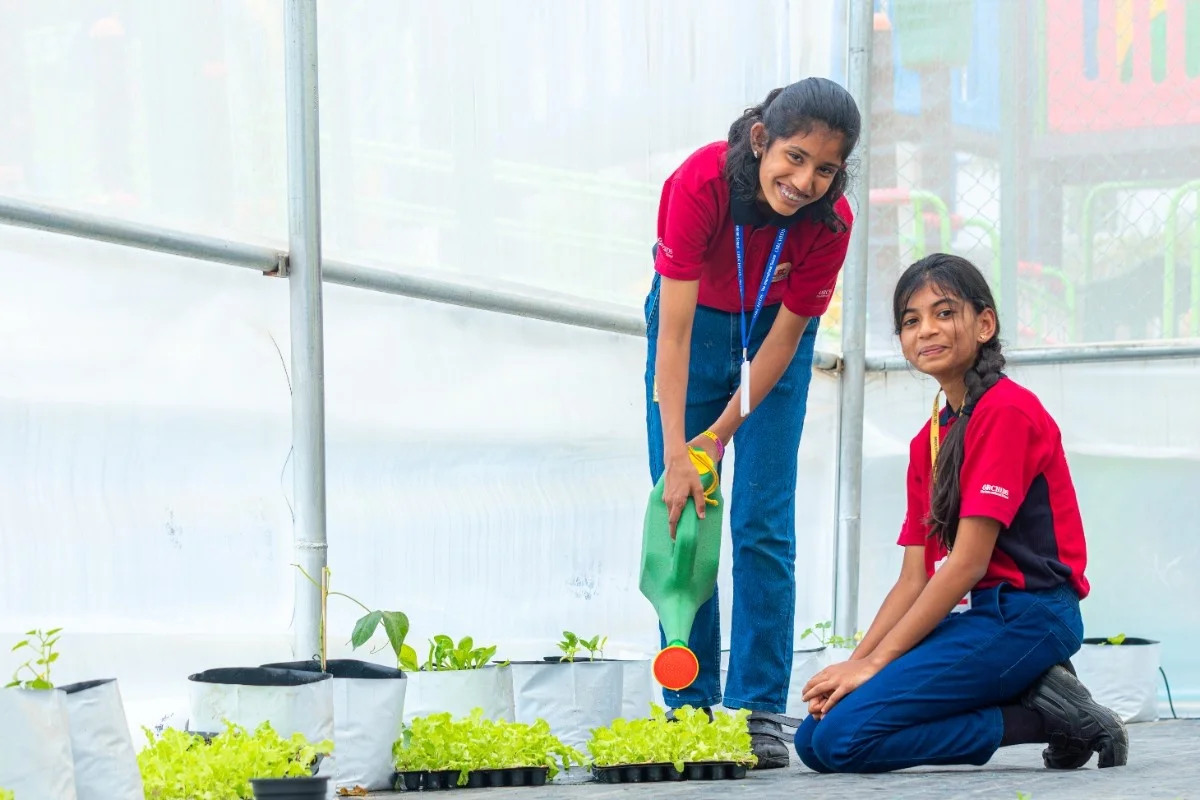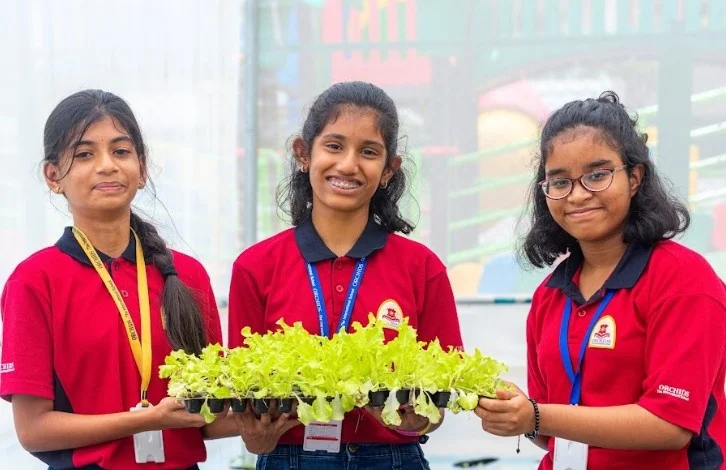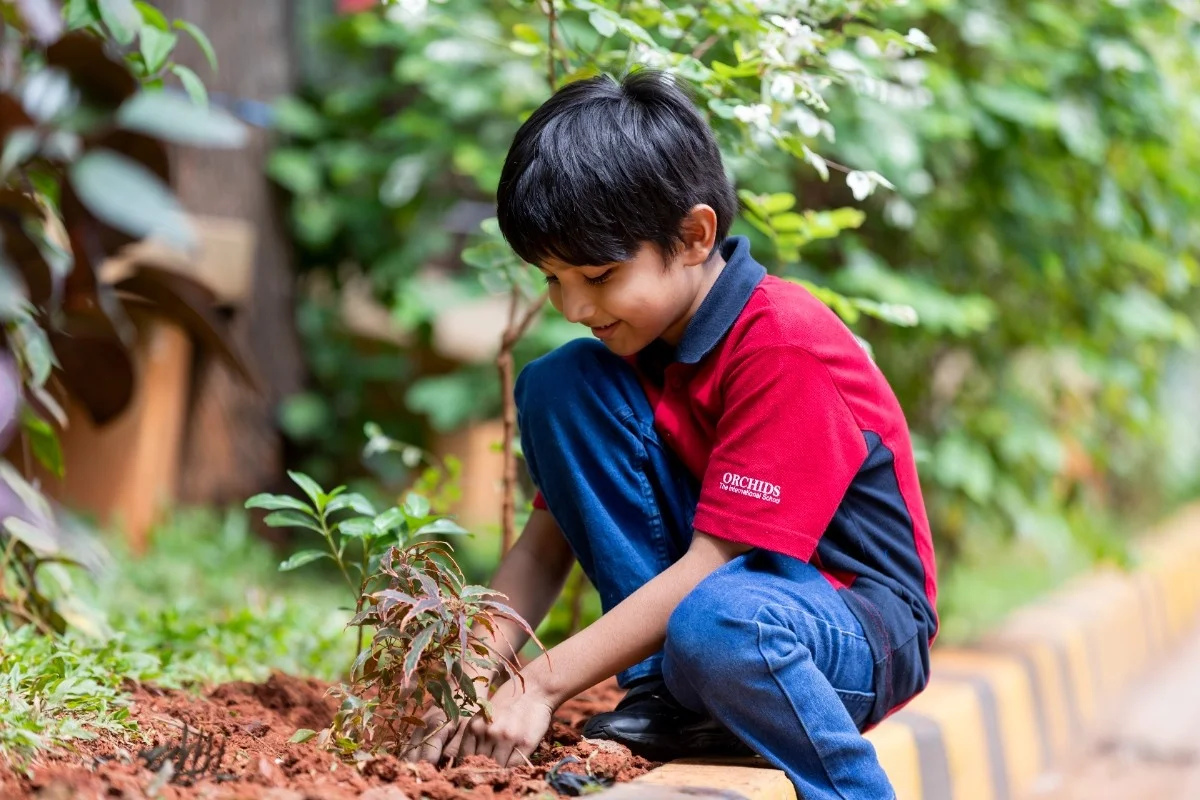Admissions Open for
Why Horticulture Class is Beneficial

How to Start with Horticulture

Superior Physical & Mental Health

Feasible Living & Environmental Worth

How to Start with Horticulture

Food Security & Nutrition
Horticulture Fundamentals
- Annuals – These are plants that complete their life within one growing season, meaning the flowering and fruiting end up with death, a fundamental part of horticulture in school.
- Olericulture – The art and science of vegetable production from sowing through every stage until storage of the final product, commonly explored in school gardening class.
- Bulb – The underground storage organ of some plants such as onions and tulips, allowing them to survive in the following seasons. Essential in gardening in school.
- Landscape Horticulture – The art and science of designing, planting, and maintaining green landscapes like gardens and parks, fostering creativity.
- Photosynthesis – The basic process where plants convert sunlight into energy, vital for plant growth and a core concept in school gardening class.
- Annuals – These are plants that complete their life within one growing season, meaning the flowering and fruiting end up with death, a fundamental part of horticulture in school.
- Olericulture – The art and science of vegetable production from sowing through every stage until storage of the final product, commonly explored in school gardening class.
- Bulb – The underground storage organ of some plants such as onions and tulips, allowing them to survive in the following seasons. Essential in gardening in school.
- Landscape Horticulture – The art and science of designing, planting, and maintaining green landscapes like gardens and parks, fostering creativity.
- Photosynthesis – The basic process where plants convert sunlight into energy, vital for plant growth and a core concept in school gardening class.
Highlights of our Horticulture

Class 1-2
- How to Plant – Learning to plant seeds, water them, and observe growth, reinforcing patience in horticulture in school.
- Introduction to Vegetables & Flowers – Understanding plant types, their uses, and how they grow in a structured school gardening class.
- Patience & Focus – Gardening teaches patience, care, and responsibility, essential in do-it-yourself learning.
- Decorative Gardening – Arranging plants, designing small gardens, and incorporating art and craft classes for natural creativity.

Grade 3-5
- Structured Gardening Skills – Step-by-step care of plants from soil preparation to watering and pruning, enhancing horticulture in school.
- Hands-on Cultivation – Growing fruits, vegetables, and herbs through different techniques to understand gardening in school.
- Leadership & Responsibility – Older students guide younger ones in planting activities and sustainable gardening, integrating do-it-yourself skills.
- Goal Setting & Sustainability – Encouraging students to set personal goals, observe plant growth, and promote eco-friendly practices.
Nursery, K1, K2
- Explore Plants – Young learners discover various types of plants, leaves, and flowers, strengthening creativity in gardening.
- Having Fun in Gardening – Watering plants and touching soil allows children to interact with nature, making school gardening class enjoyable.
- Sensory Play & Creativity – Gardening activities develop sensory skills, sparking curiosity about the environment and waste material repurposing.
- Boosting Confidence – Watching a seed grow into a plant gives children pride and responsibility, fostering early gardening in school interest

Class 1-2
- How to Plant – Learning to plant seeds, water them, and observe growth, reinforcing patience in horticulture in school.
- Introduction to Vegetables & Flowers – Understanding plant types, their uses, and how they grow in a structured school gardening class.
- Patience & Focus – Gardening teaches patience, care, and responsibility, essential in do-it-yourself learning.
- Decorative Gardening – Arranging plants, designing small gardens, and incorporating art and craft classes for natural creativity.

Grade 3-5
- Structured Gardening Skills – Step-by-step care of plants from soil preparation to watering and pruning, enhancing horticulture in school.
- Hands-on Cultivation – Growing fruits, vegetables, and herbs through different techniques to understand gardening in school.
- Leadership & Responsibility – Older students guide younger ones in planting activities and sustainable gardening, integrating do-it-yourself skills.
- Goal Setting & Sustainability – Encouraging students to set personal goals, observe plant growth, and promote eco-friendly practices.
Nursery, K1, K2
- Explore Plants – Young learners discover various types of plants, leaves, and flowers, strengthening creativity in gardening.
- Having Fun in Gardening – Watering plants and touching soil allows children to interact with nature, making school gardening class enjoyable.
- Sensory Play & Creativity – Gardening activities develop sensory skills, sparking curiosity about the environment and waste material repurposing.
- Boosting Confidence – Watching a seed grow into a plant gives children pride and responsibility, fostering early gardening in school interest
Our Horticulture Lab Setup

ORCHIDS The International School is redefining excellence in horticulture in school with a dynamic school gardening class.
- •Redefining Excellence in Horticulture in India's Best Schools – Encouraging hands-on gardening in school with practical experiences.
- •Programs on Gardening and Plant Care for Students – Structured lessons on planting, caring, and maintaining a garden.
- •Empowering Students Through Sustainability, Creativity, and Environmental Consciousness – Developing eco-friendly habits through waste material repurposing and do-it-yourself gardening projects.
Explore the Horticulture Activity



Frequently Asked Questions
There are so many reasons that organic farming, composting, water conservation and all the rest and even further hostings of biodiversity should become an adopted means and, at crucially pertinent in life of a sort one finds themselves engaged within: such lifestyles are sustainably.
It consists of several kinds. Examples include the production of vegetables, that is, olericulture, fruits, known as pomology, flowers as floriculture, and designing a garden with the help of landscape horticulture.
Horticulture is a beautiful art that builds a person as patient, careful, and tender with nature. Creativity, motor skill, scientific knowledge, and the emotion of being within nature come from a student's heart who undergoes learning under the discipline of horticulture.
The tools and equipments in horticulture are: there is a watering can, pruning shears, trowel, rake, seed trays, and composting bins, that help plant, grow, and harvest crops and flowers.
Small space horticulture is indeed very possible, that includes balconies and terraces, by the doing of container gardening, vertical gardening, hydroponic systems that make possible for plants to thrive efficiently.
CBSE Schools In Popular Cities
- CBSE Schools in Bangalore
- CBSE Schools in Mumbai
- CBSE Schools in Pune
- CBSE Schools in Hyderabad
- CBSE Schools in Chennai
- CBSE Schools in Gurgaon
- CBSE Schools in Kolkata
- CBSE Schools in Indore
- CBSE Schools in Sonipat
- CBSE Schools in Delhi
- CBSE Schools in Rohtak
- CBSE Schools in Bhopal
- CBSE Schools in Aurangabad
- CBSE Schools in Jabalpur
- CBSE Schools in Jaipur
- CBSE Schools in Jodhpur
- CBSE Schools in Nagpur
- CBSE Schools in Ahmednagar
- CBSE School In Tumkur













